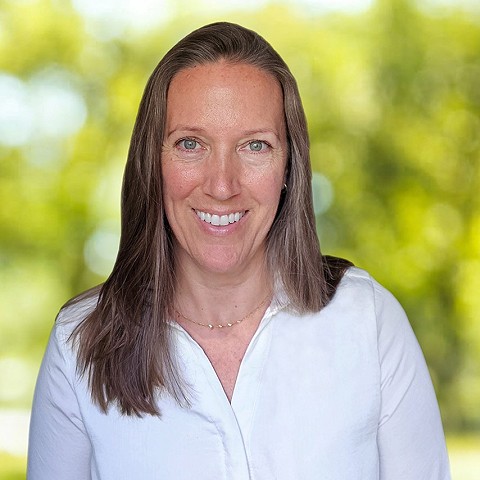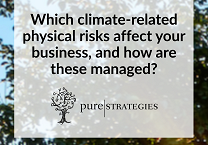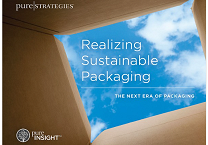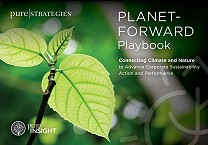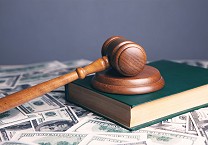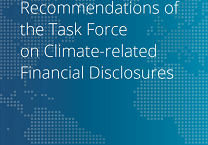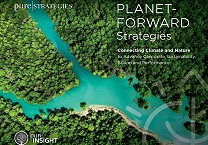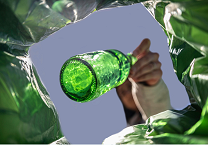A Silver Lining with Sustainable Sourcing on World Food Day
by Cheryl Baldwin, PH.D.
16 October 2013
World Food Day is the annual beacon illuminating the need to end world hunger and malnutrition. It reminds us that our current food system is falling short on feeding the population, while it also highlights agriculture's destructive relationship with the environment on which it depends. We look to this year's World Food Day with a view to silver linings and the hope emerging sustainability initiatives bring to the future.
The theme of this year's World Food Day on October 16th, sponsored by the Food and Agriculture Organization (FAO) of the United Nations, is: Healthy People Depend on Healthy Food Systems: Sustainable Food Systems for Food Security and Nutrition. This underscores the urgent need for a more sustainable relationship between food production and the environment – for example, food production must grow at least 60% by 2050 to address the current and expanding needs for nutritious food while climate change is advancing.
News from The Intergovernmental Panel on Climate Change (IPCC), reinforced that climate warming is happening and warned that, “Continued emissions of greenhouse gases will cause further warming..." Food production is a significant source of greenhouse gas (GHG) emissions, with global livestock production alone responsible for 14.5% of all human-induced climate-warming emissions. This compounds the challenge, as global warming puts more people at risk of hunger.
So what is the silver lining in this relationship gone wrong? There are a few layers. First, changes at the farm can make a major difference. FAO's research on livestock emissions highlighted opportunities to reduce livestock emissions by 30% with wider adoption of existing best practices. In addition, the FAO and IPCC see opportunities for reductions with crop production through adoption of best practices from legume and perennial crop rotations to conservation tilling and others. All told, it is estimated that close to 90% of the GHG emissions in our current system could be avoided or mitigated.
The next silver layer is that changes are being made – and the burden's not all on the farmer. Food companies, retailers, and food services are developing tools and initiatives to support farmers in stimulating real changes. General Mills rolled-out a set of sustainable sourcing goals in September 2013 with a focus on ten priority raw materials – aiming for 100% sustainable sourcing of those materials by 2020. The company is leveraging partnerships with cross-industry initiatives such as the Field-to-Market program to help reach their farmers and measure and drive environmental improvement.
PepsiCo launched a sustainable agriculture program in 2012 by targeting its five top ingredients. They developed 36 pilot projects to progress on their goal, to "continue to support sustainable agriculture by expanding best practices with our growers and suppliers." Early success was achieved with a fertilizer innovation that helped reduce potato crop emissions by 19%.
Unilever put a stake in the ground in 2010 with the ambitious goal of sourcing 100% of their agricultural raw materials from sustainable sources by 2020. They began the uphill climb toward this goal by focusing on ten leading materials, including dairy. Through a novel program called Caring Dairy, Unilever is working directly with dairy farmers to assess on-farm sustainability and animal welfare indicators and help each farmer develop an action plan to improve practices and performance. Improvement is measured each year, and the company has seen progress in all of the indicators - including climate impacts - in the first two years of the program. Another layer to the silver lining is that similar programs are emerging across the food and beverage industry.
Building your own silver lining
How can your company build its own sustainable sourcing program? It can begin with a single direct farm engagement project with a supplier or participation in a cross-industry program and progress to more systemic supplier engagement. The best way to get this going:
- Identify priority raw materials and issues - based on high impacts, ability to improve, and importance to the business.
- Develop sustainability goals and requirements for priority materials with internal or external standards.
- Implement the program through the supply with appropriate support (e.g., capacity building) and verification (e.g., audits).
- Monitor progress by tracking, measuring, and continuously improving to meet goals.
I'll end this message with one last silver lining in recognition of World Food Day. By shifting to a healthier relationship between food production and the environment, we may be able to deliver on FAO's hope of nutritious food for all.
For more information: See our company's pureSupply service offerings and the Sustainable Agriculture Initiative (SAI) Platform, a cross-industry effort.
Take a look at our blog on hunger and corporate responsibility: The Hunger Games Are Not Sponsored by Responsible Corporations
Written by Cheryl Baldwin, PH.D.
Cheryl Baldwin, Ph.D., is a Vice President of Sustainability Consulting for Pure Strategies where she partners with corporate clients to develop and execute sustainability strategies to improve performance across retail, food and agriculture, home and personal care, and cosmetics industries. She also leads the firms’ global market research to generate new insights to accelerate business transformation.
Cheryl’s recent projects include helping build a leading nature strategy for Toyota Motor North America, developing sustainability goals for TAZO, creating a sustainable packaging strategy and implementation tools for Walmart, and advancing a sustainable chemistry program for Sephora. Cheryl also worked with industry groups to support broader impact including, FMI, the food industry association, and the National Retail Federation (NRF).
Cheryl authored Pure Strategies’ market research reports: Planet-Forward Strategies, Connecting to the Farm, Reaching the New Corporate Frontier, Advancing on the Path to Product Sustainability, and other reports. She wrote the book, The 10 Principles of Food Industry Sustainability and is the lead author/editor for two additional books on sustainability, Greening Food and Beverage Services and Sustainability in the Food Industry and holds U.S. and international patents.
Prior to Pure Strategies, Cheryl led the life cycle research and sustainability standard program for the non-profit ecolabel organization Green Seal. Cheryl also worked in Research and Development for Kraft Foods, Inc. where she was involved in all phases of R&D from novel ingredient development to global product commercialization. Cheryl holds a Ph.D. and M.S. from Cornell University and a B.S. from the University of Illinois, all in Food Science.
Cheryl has been named one of the Top 50 Women Leaders of DC for the second consecutive year, based on a methodical review of women executives and leaders across the area. She was identified for her career track record, including her leadership position at Pure Strategies. The recognition came from Women We Admire (WWA), a membership organization of over 1,200 of the most accomplished women leaders in business, law, consulting, education, non-profit and other sectors. based on a methodical review of women executives and leaders across the area. She was identified for her career track record, including her leadership position at Pure Strategies. The recognition came from Women We Admire (WWA), a membership organization of over 1,200 of the most accomplished women leaders in business, law, consulting, education, non-profit and other sectors.


